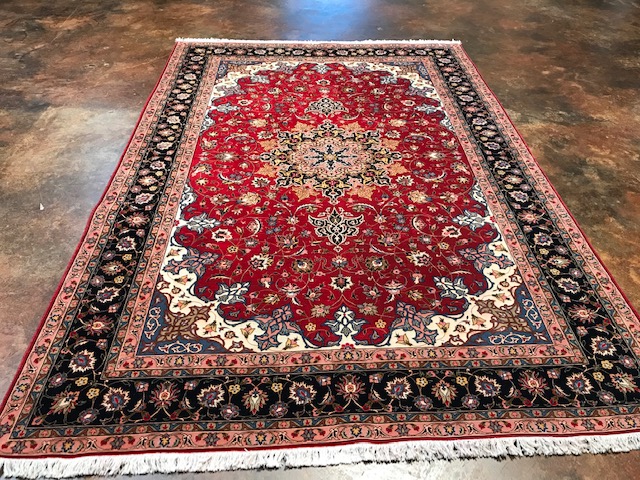What Are the Unique Qualities, Regional Styles, and Care Techniques of Persian Rugs That Reflect Persia’s Rich Cultural Heritage and Artistry?
Craftsmanship and Eco-conscious Artistry in Persian Rug Making
Persian rugs are a true testament to the skill and artistry of the craftsmen who create them. These rugs are known for their exquisite beauty, detailed designs, and exceptional quality. The art of rug-making in Persia dates back centuries and has become an integral part of the country's cultural heritage. Each rug is a unique piece of art, showcasing the talent and creativity of its weavers.
Choosing High-Quality and Environmentally Friendly Materials for Persian Rugs
The process of creating a Persian rugs begins with the selection of high-quality materials. Wool is the most commonly used fiber, valued for its durability and softness. Silk is another luxurious material often incorporated for its fine texture and natural sheen. The materials are carefully chosen to ensure that the rug will withstand the test of time and maintain its vibrancy.
Hand-Knotting and Eco-friendly Practices in Persian Rug Weaving
Once the materials are selected, the weaving process begins. Persian rugs are known for their intricate designs and meticulous craftsmanship. Each rug is hand-knotted, with artisans tying thousands of knots to create a dense and detailed pattern. This process is time-consuming and requires a high level of skill and patience. Depending on the complexity of the design and the size of the rug, the weaving process can take months or even years.
Symbolism and Natural Dyes in Persian Rug Designs
The designs of Persian rugs vary depending on the region where they are made. Each region has its own distinct style and motifs, reflecting local traditions and cultural influences. From geometric patterns to floral motifs, the designs are often symbolic and carry deep meaning. These designs are meticulously planned and executed, with each knot carefully placed to bring the pattern to life.
One of the most striking aspects of Persian rugs is their vibrant color palette. Natural dyes are used to achieve rich and varied hues, enhancing the overall beauty of the rug. The combination of colors and patterns creates a harmonious and captivating visual experience. These rugs are not only functional but also serve as stunning pieces of art that can transform any space.
Caring for a Persian rug is essential to preserving its beauty and longevity. Regular cleaning and maintenance can help protect the rug from wear and tear. It is also important to avoid placing the rug in direct sunlight, as this can cause fading over time. Proper care ensures that a Persian rug will retain its quality and remain a cherished piece for generations.
In addition to their aesthetic appeal, Persian rugs hold significant cultural and historical value. They are often passed down through families as heirlooms, carrying with them stories and memories of the past. The artistry and craftsmanship that go into creating a Persian rug make it a cherished possession that transcends time.
In conclusion, Persian rugs are a testament to the rich cultural heritage and artistic traditions of Persia. Their exquisite designs, quality materials, and meticulous craftsmanship make them a sought-after choice for collectors and interior designers. Whether as a statement piece or a treasured heirloom, a Persian rug adds elegance and character to any space.

Comments
Post a Comment